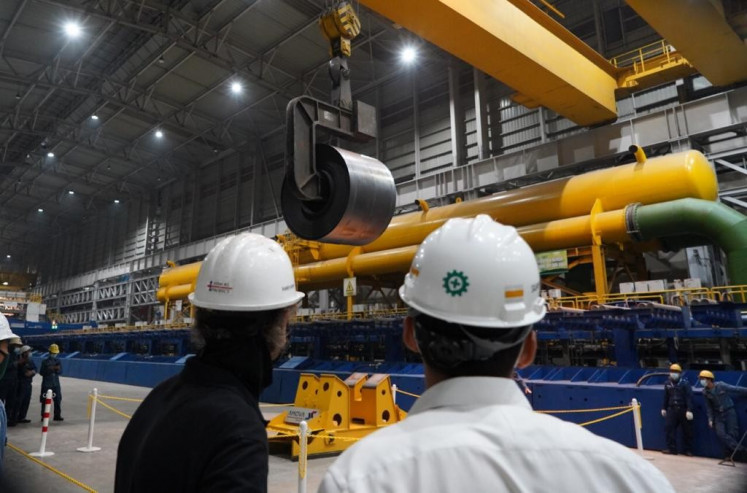Popular Reads
Top Results
Can't find what you're looking for?
View all search resultsPopular Reads
Top Results
Can't find what you're looking for?
View all search resultsCan we get along? Rodney King's 1992 appeal still valid today
The brutal death of George Floyd reminded me of the King beating and my life in Kalamazoo.
Change text size
Gift Premium Articles
to Anyone
"Can we get along?" Rodney King appealed in a trembling voice as riots rocked Los Angeles on May 1, 1992.
The acquittal of four white policemen who had savagely beaten King, an African-American, sparked the riots.
They kicked and clubbed the unarmed black man 56 times, resulting in skull fractures, broken bones and teeth, and permanent brain damage.
It was caught on video by a bystander, and the world witnessed police racism and brutality in the United States.
I was living in Kalamazoo, Michigan when the police beating of King happened. I was studying organizational communication and journalism at Western Michigan University.
The brutal death of George Floyd reminded me of the King beating and my life in Kalamazoo.
"I can't breathe. Don't kill me" pleaded Floyd, a black man who was handcuffed. A white cop knelt on his neck for eight minutes and 46 seconds in Minneapolis, Minnesota on May 25.
Floyd's death is a reminder of the perception that black lives don't matter in the United States.
However, my experience living in the United States is different. I don't remember experiencing racism in the four years I lived there in the 1990s.
I felt "reverse racism". Americans treated me more nicely because I was a foreigner. Perhaps, the cashier at the supermarket thought I was a rich kid from Japan. We Asians all looked the same to them.
Perhaps I lived in a white bubble where racism didn't exist. But Kalamazoo was not WASP (White Anglo-Saxon Protestant). About 20% of its population was black.
There was a neighborhood called the Northside of which 83% of the population, according to a 2000 census, was black. We were told not to venture there as it had a high crime and murder rate.
In downtown Kalamazoo, about 4km from campus, if you walked north, the shops were broken down and the walls vandalized with graffiti. You stopped going further as the possibility of getting mugged got higher.
Despite the warnings not to go to the Northside, known for its poverty, drugs and crime, I ventured there at night.
A black taxi driver, who was an ex-soldier, drove me around the neighborhood.
Many of the houses in Northside were in a state of neglect. Drug dealers and prostitutes hung out at the front porch.
(To be fair to Northside, on June 2, I read an article in secondwavemedia.com that says the neighborhood has "a rich heritage of churches, institutions and history".)
I didn't live in a bubble on campus. I didn't mix exclusively with Malaysian students.
My good friend was a black freshman. He said whenever we went out together, people were afraid of us as there was a movie about a black man and a Chinese who were martial art exponents.
To think about it, wasn't that racial stereotyping?
I've also had a brush with the law in Kalamazoo.
One night, I went out clubbing with a Singaporean housemate in downtown Kalamazoo. We entered a Greek restaurant and were surprised that it was unoccupied. When we stepped out the premises, two police patrol cars were waiting outside.
The policemen politely told us to enter separately into the two vehicles. Inside, they questioned me on why I entered the restaurant.
"The door was open, and we wanted to go for a drink. We did not know that it was closed and the staff forgot to lock the door," I said.
After a few minutes, the cops released us.
If I was black or with my black friend, I'm not sure whether my story would have taken a brutal twist.
Missing Kalamazoo, I googled it on Tuesday night. I found an article in the Western Herald, a college newspaper I use to write for, about "Police brutality protests reach downtown Kalamazoo".
On May 30, hundreds gathered in downtown Kalamazoo to protest against racism, police brutality, and the death of Floyd.
The protesters spoke out about episodes of police brutality in Kalamazoo.
The Western Herald reported that a white woman told the crowd that 10 years ago a cop punched a teenager who spat in his face when the police responded to a report of shots having been fired.
"He is now the assistant chief of KDPS (Kalamazoo Department of Public Safety)," she said, adding that she used to believe she was color blind but changed her mind “after making complaints to KDPS that fell on deaf ears".
That is not the Kalamazoo that I remember. I have fond, non-racial memories of the city.
Last night, I googled Kalamazoo again.
On Monday (June 1) night, mlive.com reported that police used teargas in downtown Kalamazoo to disperse vandals who were destroying property.
Windows were smashed at several shops on Kalamazoo Mall, the first outdoor pedestrian mall in the United States.
"At one point, a group of a half dozen chanted, 'No justice, no peace. What's his name? George Floyd. What did he say? I can't breathe'," mlive.com reported.
The anger over Floyd's brutal death has reached Kalamazoo. Probably the angst was there when the police brutalized King.
It is just that I thought we all could get along. And that black lives matter.
This article appeared on The Star newspaper website, which is a member of Asia News Network and a media partner of The Jakarta Post










